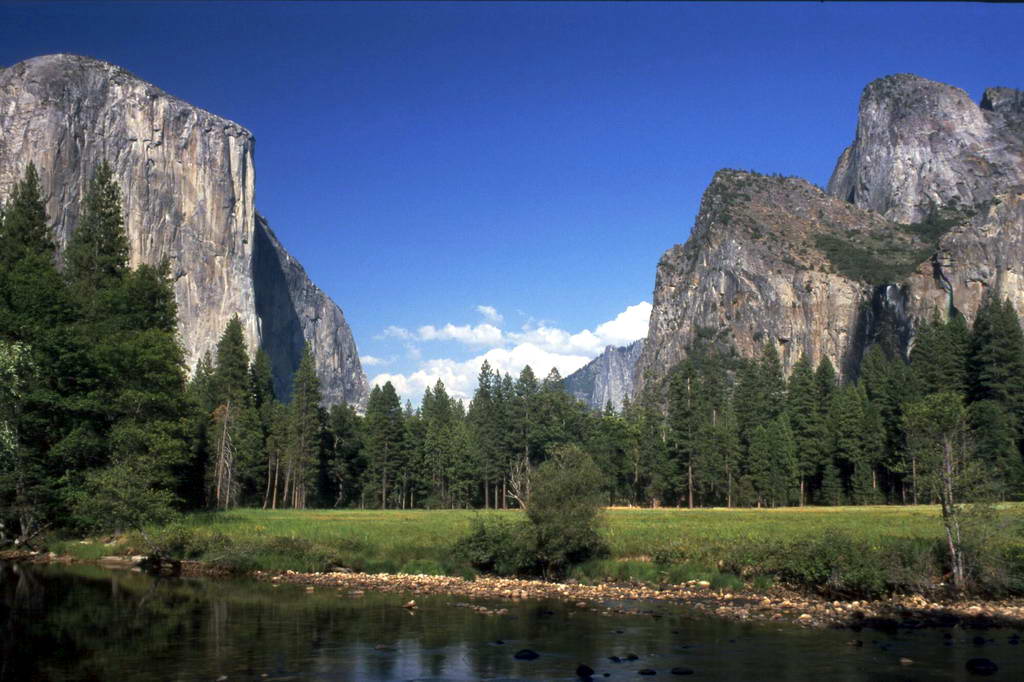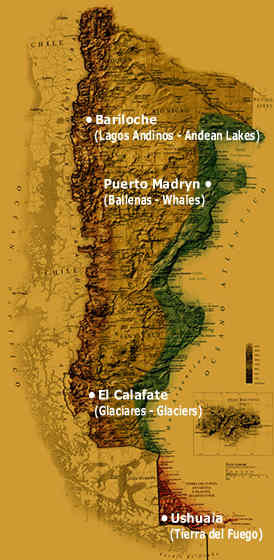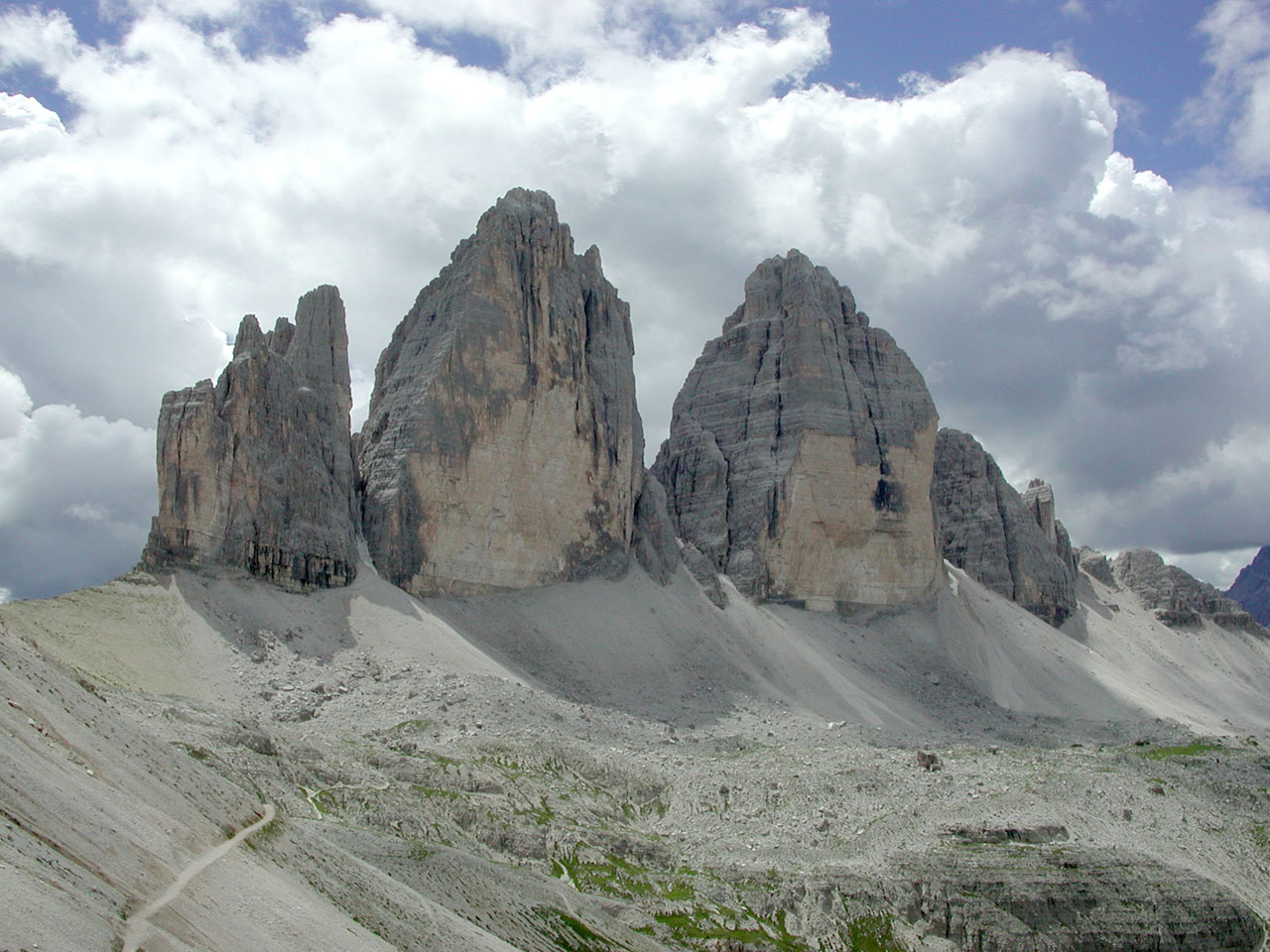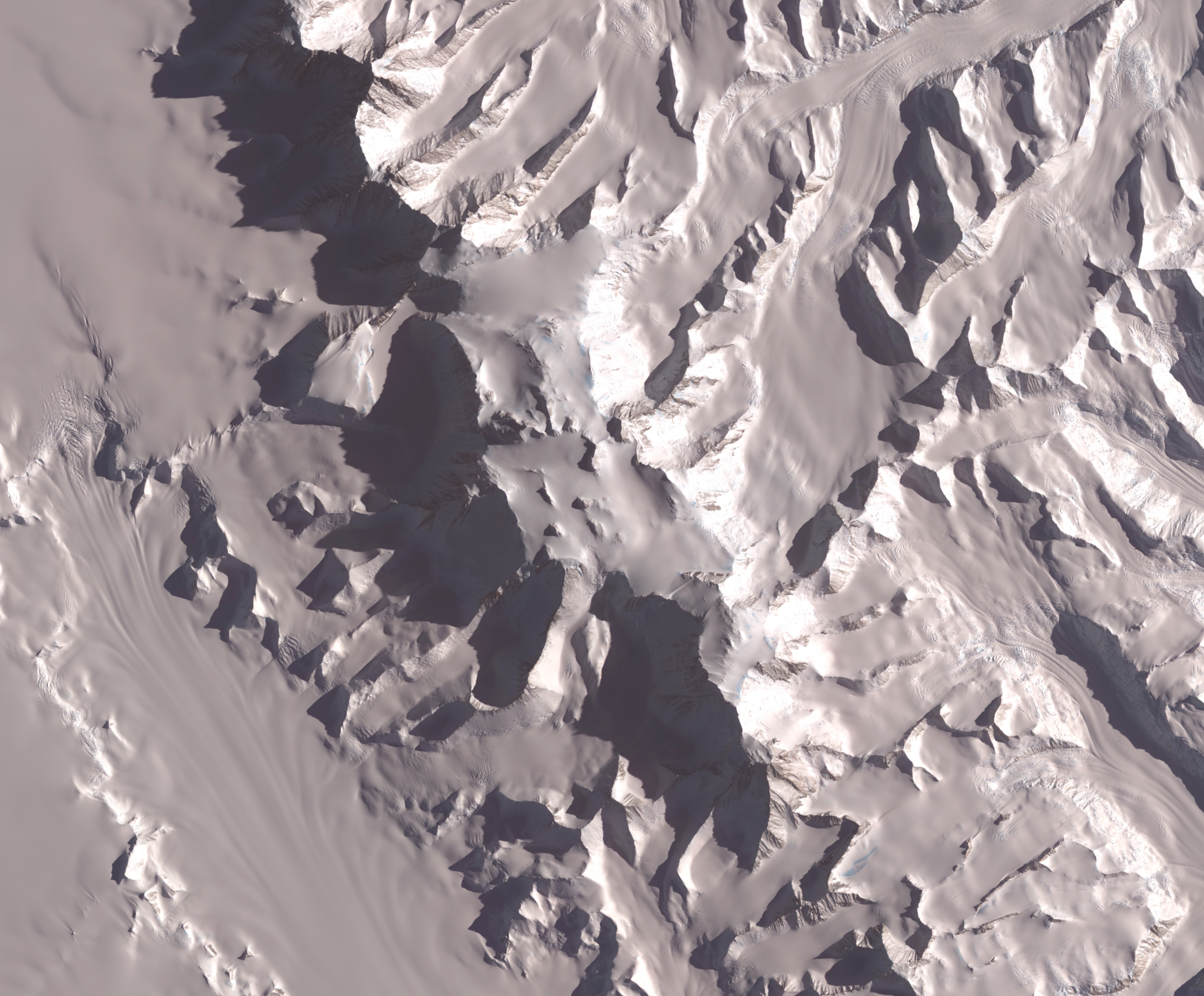 The "Matterhorn" is one of the world's most famous mountain and it's considered as an iconic emblem of the region of the Swiss Alps. Its 1 200 meters North face is one of the great north faces of the Alps.
The "Matterhorn" is one of the world's most famous mountain and it's considered as an iconic emblem of the region of the Swiss Alps. Its 1 200 meters North face is one of the great north faces of the Alps. The Matterhorn has two distinct summits, both situated on a 100-meter-long rocky ridge: the Swiss summit (4 477,54 m) on the east and the Italian summit (4 476,4 m) on the west. Their names originated from the first ascents not for geographic reasons as they are both located on the border. Because of plate tectonics, the part of the Alps in which the Matterhorn is located still continues to rise at a faster rate than the forces of erosion are able to erode it.
The Matterhorn has two distinct summits, both situated on a 100-meter-long rocky ridge: the Swiss summit (4 477,54 m) on the east and the Italian summit (4 476,4 m) on the west. Their names originated from the first ascents not for geographic reasons as they are both located on the border. Because of plate tectonics, the part of the Alps in which the Matterhorn is located still continues to rise at a faster rate than the forces of erosion are able to erode it.The Matterhorn by Helicopter
The mountain derives its name from the German words Matte, meaning meadow, and Horn, which means peak also named after the family that lived there Matter which latter derived the names Mattern and Mottern. The Italian and French names come from Mons Silvinus from the Latin word silva, meaning forest. The changing of the first letter s to c is attributed to Horace Bénédict de Saussure, believing that the word was related to a deer (French: cerf).
The most well-known faces are the east and north ones, both visible from Zermatt. The east face is 1,000 meters high and presents a high risk of rockfall, making its ascent dangerous. The north face is 1,200 meters high and is one of the most dangerous north faces in the Alps, in particular for its risk of rockfall and storms. The south face is 1,350 meters high and offers many different routes. Finally, the west face, the highest at 1,400 meters, has the fewest routes of ascent.
Matterhorn Sunrise
The Matterhorn was one of the last of the main Alpine mountains to be ascended, not because of its technical difficulty, but because of the fear it inspired in early mountaineers. The first serious attempts began around 1857, mostly from the Italian side; but despite appearances, the southern routes are harder, and parties repeatedly found themselves having to turn back. However, on July 14, 1865, in what is considered the last ascent of the golden age of alpinism, the party of Edward Whymper, Charles Hudson, Lord Francis Douglas, Douglas Robert Hadow, Michel Croz and the two Peter Taugwalders (father and son) was able to reach the summit by an ascent of the Hörnli ridge in Switzerland. Upon descent, Hadow, Croz, Hudson and Douglas fell to their deaths on the Matterhorn Glacier, and all but Douglas (whose body was never found) are buried in the Zermatt churchyard.
Matterhorn, Hörnligrat
The four main ridges separating the four faces are also the main climbing routes. The easiest, the Hörnli ridge (Hörnligrat), lies between the east and north faces, facing the town of Zermatt. To its west lies the Zmutt ridge (Zmuttgrat), between the north and west faces. The Lion ridge (Cresta del Leone), lying between the south and west faces is the Italian normal route and goes through the Pic Tyndall. Finally the south side is separated from the east side by the Furggen ridge (Furggengrat), the most difficult ridge of all.
Today, all ridges and faces of the Matterhorn have been ascended in all seasons, and mountain guides take a large number of people up the northeast Hörnli route each summer. By modern standards, the climb is fairly difficult (AD Difficulty rating), but not hard for skilled mountaineers. There are fixed ropes on parts of the route to help. Still, several climbers die each year due to a number of factors including the scale of the climb and its inherent dangers, inexperience, falling rocks, and overcrowded routes.
Matterhorn climbing - Polish expedition
The usual pattern of ascent is to take the Schwarzsee cable car up from Zermatt, hike up to the Hörnli Hut (elev. 3,260 m/10,695 ft), a large stone building at the base of the main ridge, and spend the night. The next day, climbers rise at 3:30 am so as to reach the summit and descend before the regular afternoon clouds and storms come in. The Solvay Hut located on the ridge at 4,003 m can be used only in a case of emergency.
Other routes on the mountain include the Italian ridge (D Difficulty rating), the Zmutt ridge (D Difficulty rating) and the north face route, one of the six great north faces of the Alps (TD+ Difficulty rating).
The major routes on the Matterhorn are
Hörnli (Normal route)
* Difficulty: AD+
* Time: 5-6 hours
* Start: Hörnlihütte (3'260 m)
Zmutt
* Difficulty: D
* Ascent time: 6-7 hours
* Start: Hörnlihütte (3'260 m)
Furggen
* Difficulty: TD
* Ascent time: 7 hours
* Start: Bivacco Bossi (3'345 m)
Lion (Italian normal route)
* Difficulty: AD+
* Ascent time: 4-5 hours
* Start: Rifugio Carrel (3'829 m)
Live cams in the area - Zermatt - Matterhorn
Used information, pictures and video from http://en.wikipedia.org/ and http://www.youtube.com/





















